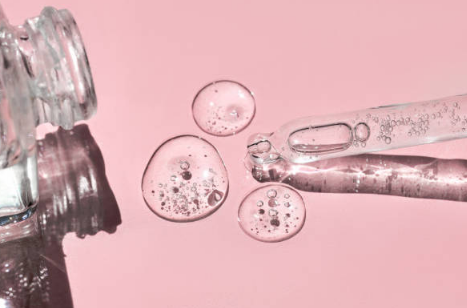Most skincare products are pretty straightforward: cleansers clean, exfoliators exfoliate, moisturizers hydrate—you get the idea. But serums can be a bit more tricky. They often come in small, cute bottles with bold claims, and even though we may not fully understand what they do or how to best use them, they still find their way into our daily routines.
What is a Facial Serum?
A facial serum is a lightweight, concentrated liquid made up of active ingredients that easily penetrate the skin. They address a variety of needs, from toning to oil control. For example, some serums contain Vitamin C, Hyaluronic Acid, and other key ingredients, and are usually a part of multi-step skincare routines, especially for those targeting specific skin concerns.
The Common Benefits
The benefits of facial serums include improving skin texture and tone, reducing fine lines and wrinkles, and enhancing moisture and nourishment. These benefits depend on the active ingredients: serums with Alpha Hydroxy Acids (AHAs) like glycolic acid or Beta Hydroxy Acid (BHAs) like salicylic acid help improve texture and even out skin tone. Serums with retinol can reduce the appearance of fine lines, while serums with high concentrations of Hyaluronic Acid provide deep hydration.

How to Choose a Serum
In the age of TikTok and social media trends, it can be tempting to jump on the bandwagon and follow popular products. But it’s best to focus on the active ingredients, rather than just the trending product. Serum brands typically list the active ingredients and briefly describe how they benefit the skin:
-
For pigmentation issues, look for active ingredients like tranexamic acid, glycolic acid, or potent antioxidants like lotus extract.
-
For inflammation and redness, choose a serum based on niacinamide.
-
Want to boost hydration? Opt for serums with Hyaluronic Acid and Panthenol.
-
If you’re prone to acne, consider serums with salicylic acid and niacinamide.
Like other skincare steps, serum selection depends on your skin type and the results you’re aiming for. Consulting a certified dermatologist is always a good idea—they can help you understand your skin and recommend the best products for your needs.
When to Use Them
How often you use a serum depends on your needs, but there are general best practices for specific serums. For Vitamin C, it’s recommended to use it every morning. Retinol should be used at night, preferably daily. Hyaluronic Acid serums can be used once or twice a day, while exfoliating serums (AHAs, BHAs) should be used once or twice a week at most.
How to Apply Them
Remember, serums are highly concentrated, so a little goes a long way. Usually, just a few drops are enough. Always read the packaging instructions, as usage may vary by product.
The general rule for applying serums is to layer from the thinnest to the thickest product. Serums are typically applied after cleansing but before heavier products like moisturizers and sunscreens.
Do You Still Need a Moisturizer and Sunscreen?
The short answer: yes, you do. Some serums, especially Vitamin C or Retinol, can make your skin more sensitive to the sun, so protecting it is crucial. Make sure your moisturizer and sunscreen don’t contain the same active ingredients as your serum. Too many overlapping active ingredients can lead to irritation and may delay your skincare goals.
Common Mistakes to Avoid
The biggest mistake people make is using too much product, especially with potent serums like Vitamin C or Retinol. A little goes a long way, so stick to a few drops. Two common errors when applying serums are overuse (applying too often or using too much) and directly applying the dropper or applicator to your skin, which can cause contamination. Always drop the serum onto your hand or hover the applicator above the skin without letting it touch your face.
Conclusion
Facial serums are lightweight skincare products that contain high concentrations of active ingredients, which target specific skin concerns effectively. Not all serums have the same effect, so it’s essential to choose one that suits your skin type and desired outcome. Whether your goal is to reduce fine lines and wrinkles, boost hydration, or improve pigmentation, incorporating serums into your routine can help you achieve those results. If you’re unsure, always consult with a dermatologist for personalized advice.